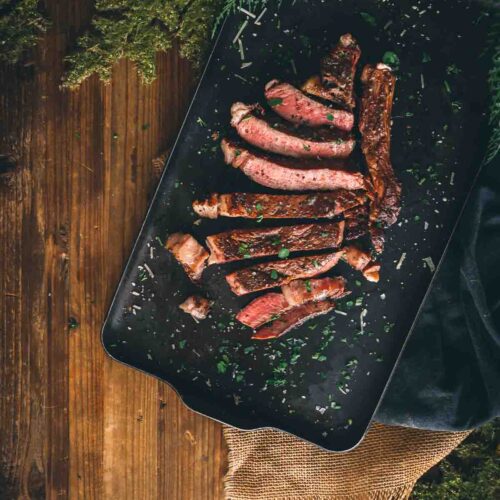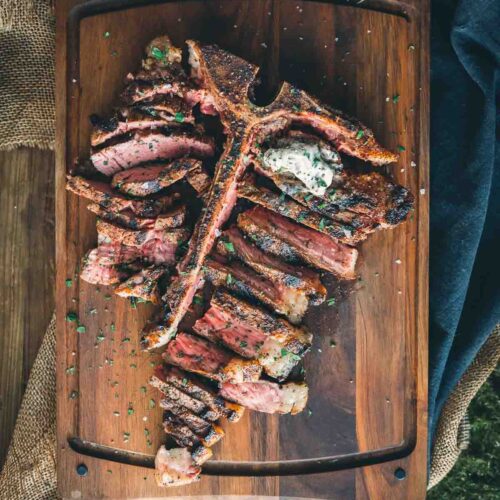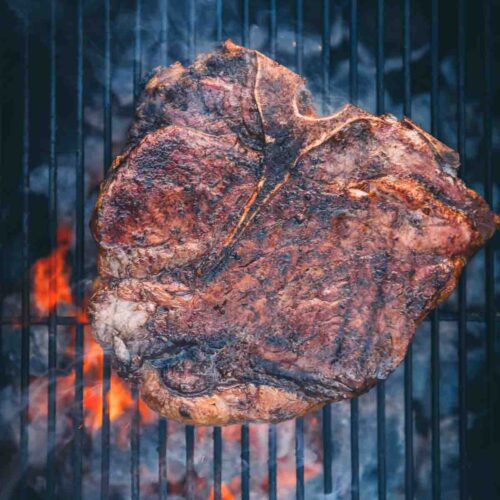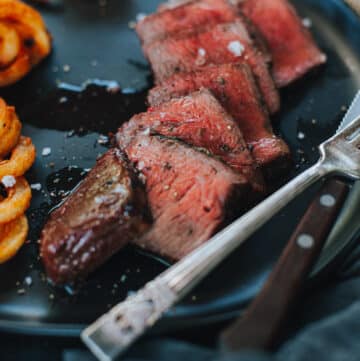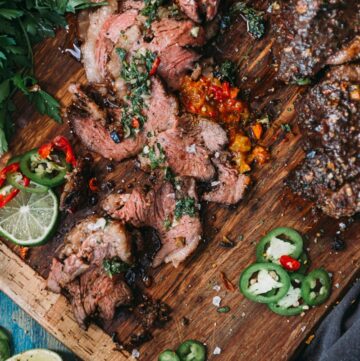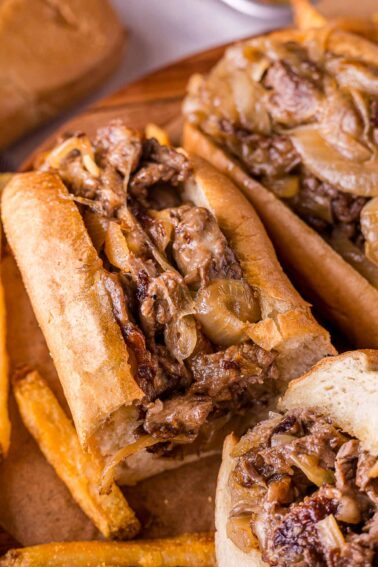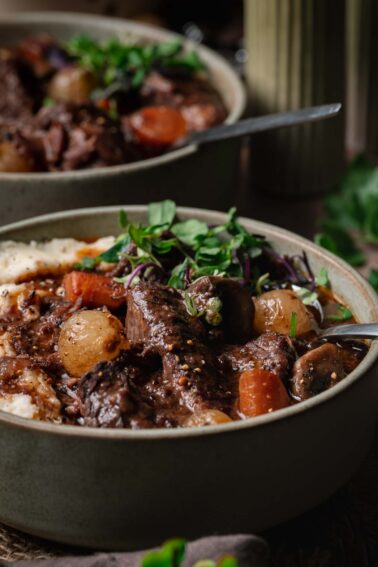Discover the art of grilling the perfect steak and elevate your culinary skills with our ultimate guide to the best steaks for grilling! Explore the unique characteristics of various cuts, learn the secrets to expert grilling techniques, and find the perfect pairings to enhance their flavors for your steak recipe. From crowd-pleasers on any budget to flavor-packed selections from around the world, find out what makes these unique specialties stand out.
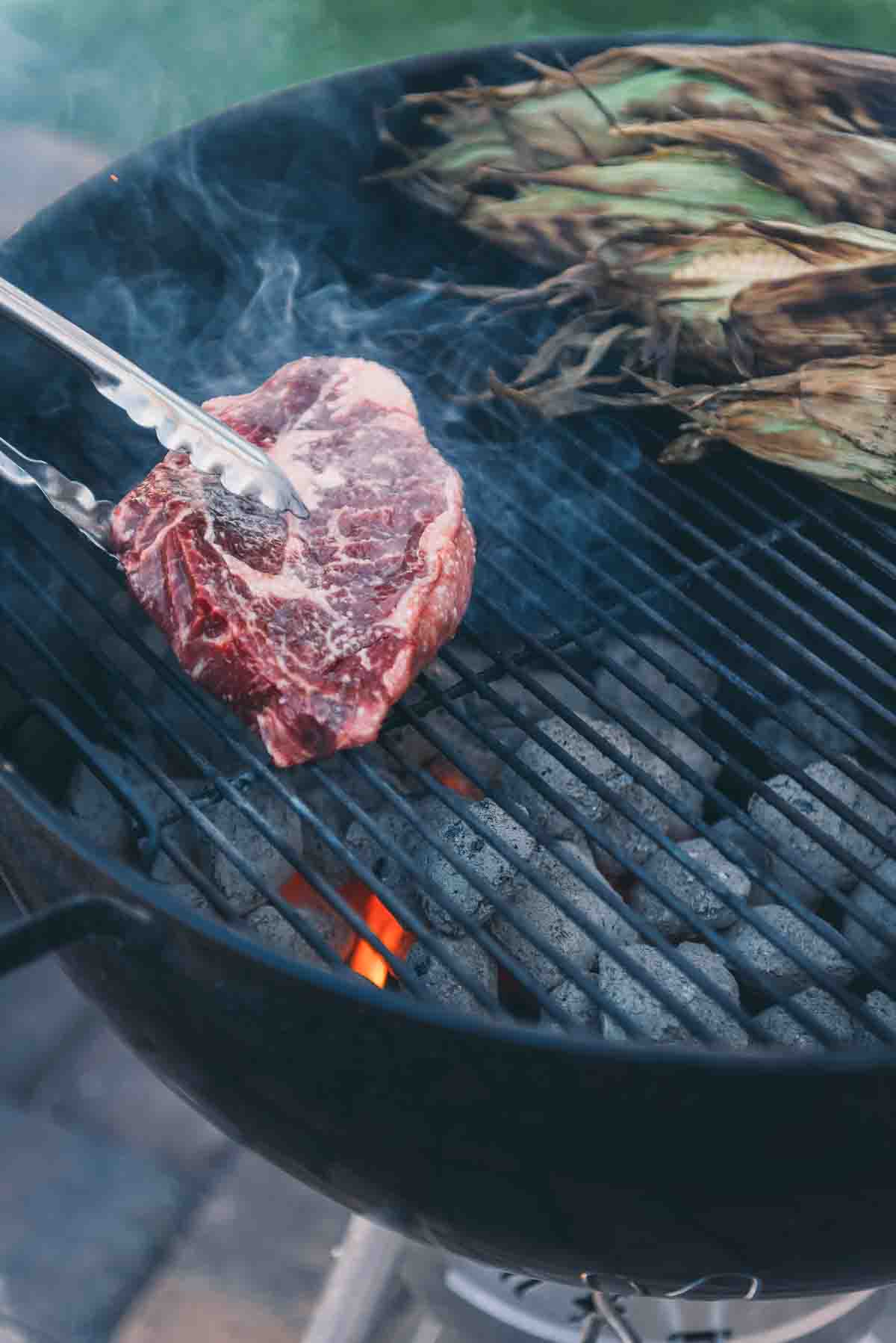
Table of Contents
There’s nothing as good as a perfectly cooked steak hot off the grill. But, with so many cuts of beef available, knowing which can give the best results for your money can be difficult. From the juicy ribeye to the tender filet `mignon, every cut of beef has its own texture and flavor, whether you’re shopping a great deal at your local butcher, grocery store, or from the best places to buy meat online.
Let’s break it down and dive deep into the best steaks for grilling with tips on how to cook them perfectly every time. Master the skill of a perfectly grilled steak by knowing exactly how to grill each one.
Quick Tips for Grilling the best steaks:
- Choose your steak cut: Different cuts such as ribeye, New York strip, filet mignon, picanha, and tri-tip offer varied flavors and textures.
- Understand marbling: The fat streaks within steak, or marbling, significantly contribute to the steak’s flavor, juiciness, and tenderness.
- Master grilling techniques: Employ direct and indirect grilling methods to enhance your steak’s taste and texture. Direct grilling is perfect for searing, while indirect grilling offers slower, even cooking.
- Set up a 2-zone fire: Learn to set up a 2-zone fire on your grill to create separate zones for searing and slower cooking.
- Pair your steak well: Complement your properly grilled steak with appropriate side dishes like grilled vegetables or potato salad and robust red wines such as Cabernet Sauvignon.
Understanding Steak Cuts
Steak cuts refer to the parts of the cow from which the steak is sourced. Each cut has unique characteristics and flavors that can be enhanced through specific cooking methods. Let’s delve into some common and lesser-known types of steak.
Common Steak Cuts
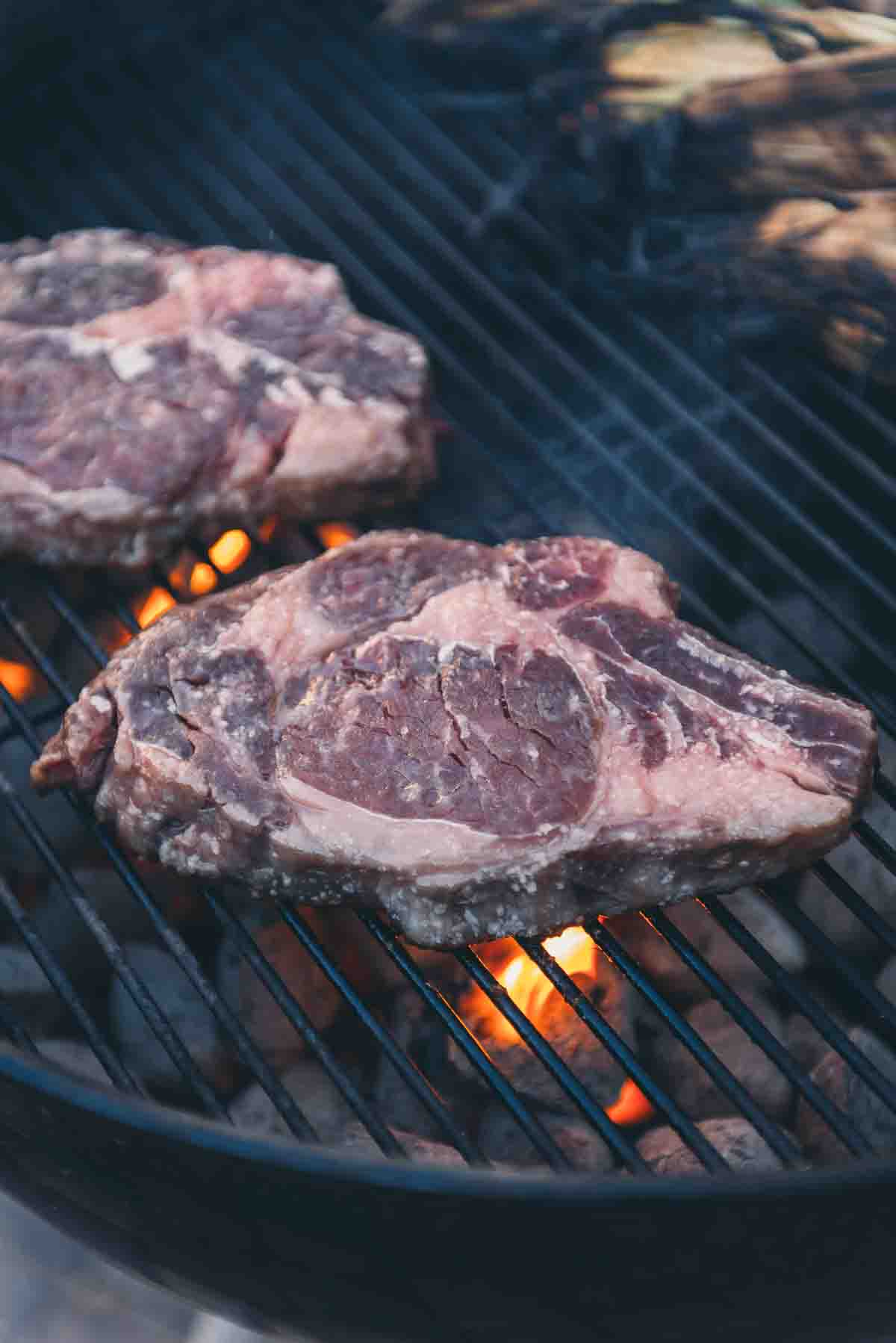
Ribeye Steak
Easily the most popular steak for grilling, it’s known for its rich marbling, which results in a juicy and tender steak when grilled. Ribeye steaks have a good balance of meat and fat, making them ideal for high-heat grilling.
- Fact: Ribeye is carved from the whole rib roast, making it a single steak from the prime rib.
- Grilling Tip: Because of its high-fat content, keep an eye on flare-ups.
- Seasoning and Side: Keep it simple with salt and pepper. Ribeye steak pairs well with classic steakhouse sides like grilled vegetables and smoked baked potatoes.
- Get the recipe: Grilled Bone-in Ribeye Steaks

New York Strip
When left with the bone in, this cut has less fat than a ribeye but still offers excellent flavor and tenderness. It’s good for grilling due to its uniform shape and thickness, ensuring even cooking.
- Fact: The strip steak, New York Strip Steak, and Kansas City Strip Steak are all the same delicious steak with the difference of bone in or boneless.
- Grilling Tip: Cook on high heat for a seared outside and juicy steak inside.
- Seasoning and Side: Garlic butter works great. Serve with grilled asparagus or roasted domino potatoes.
- Get the recipe: Grilled Kansas City Strip Steaks
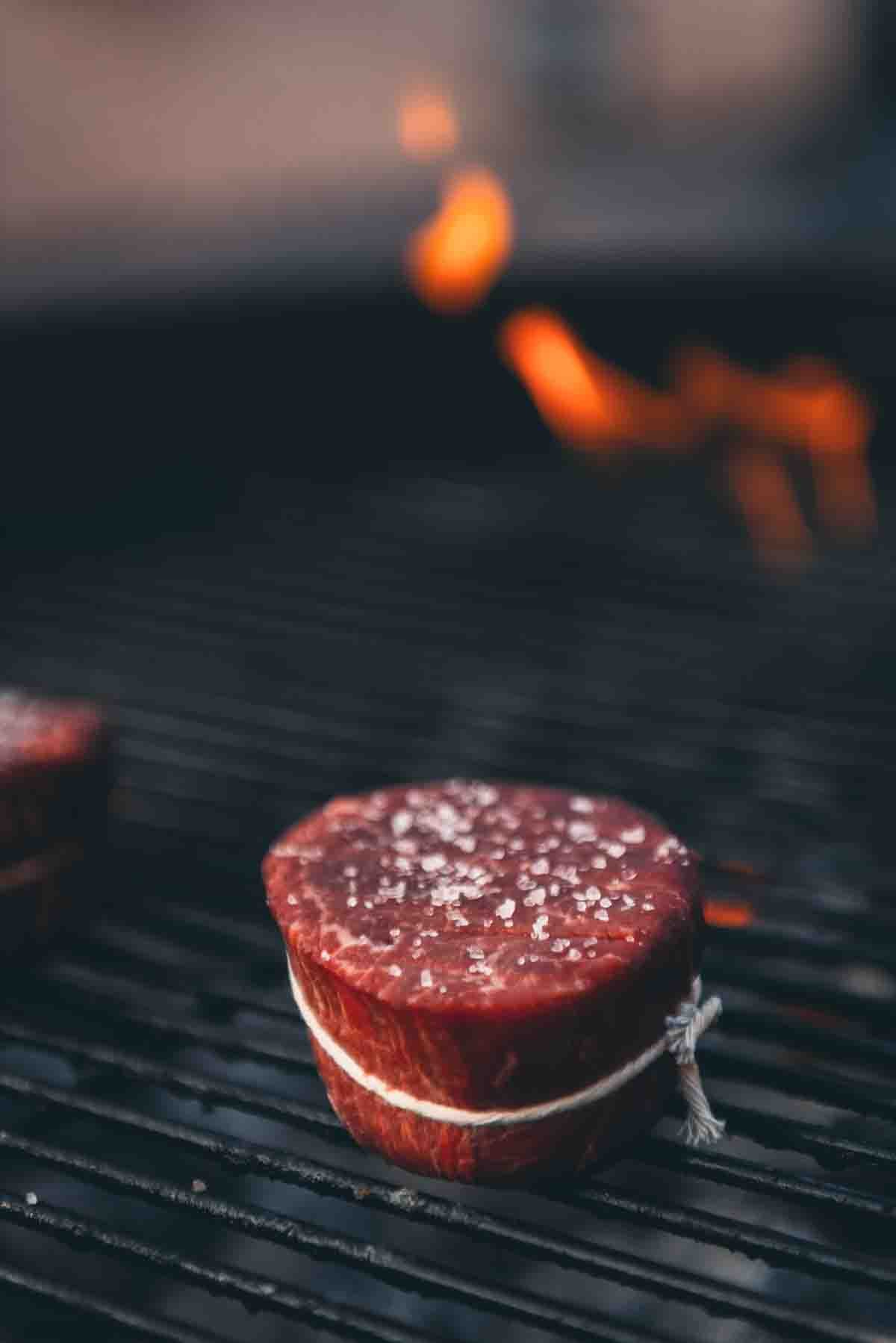
Filet Mignon
One of the leaner cuts of steak, filet mignon, is prized for its tenderness. While it’s less flavorful compared to fattier cuts, it’s perfect for grilling hot and fast or with bacon wrapped around it to add more flavor.
- Fact: Filet Mignon means “tender fillet” or “fine fillet” in French.
- Grilling Tip: Avoid overcooking, as it can dry out due to its low-fat content.
- Seasoning and Side: We love a great peppercorn crust on a filet topped with a brandy peppercorn sauce. It pairs well with a creamy mashed potato or a light salad.
- Get the recipe: Grilled Filet Mignon
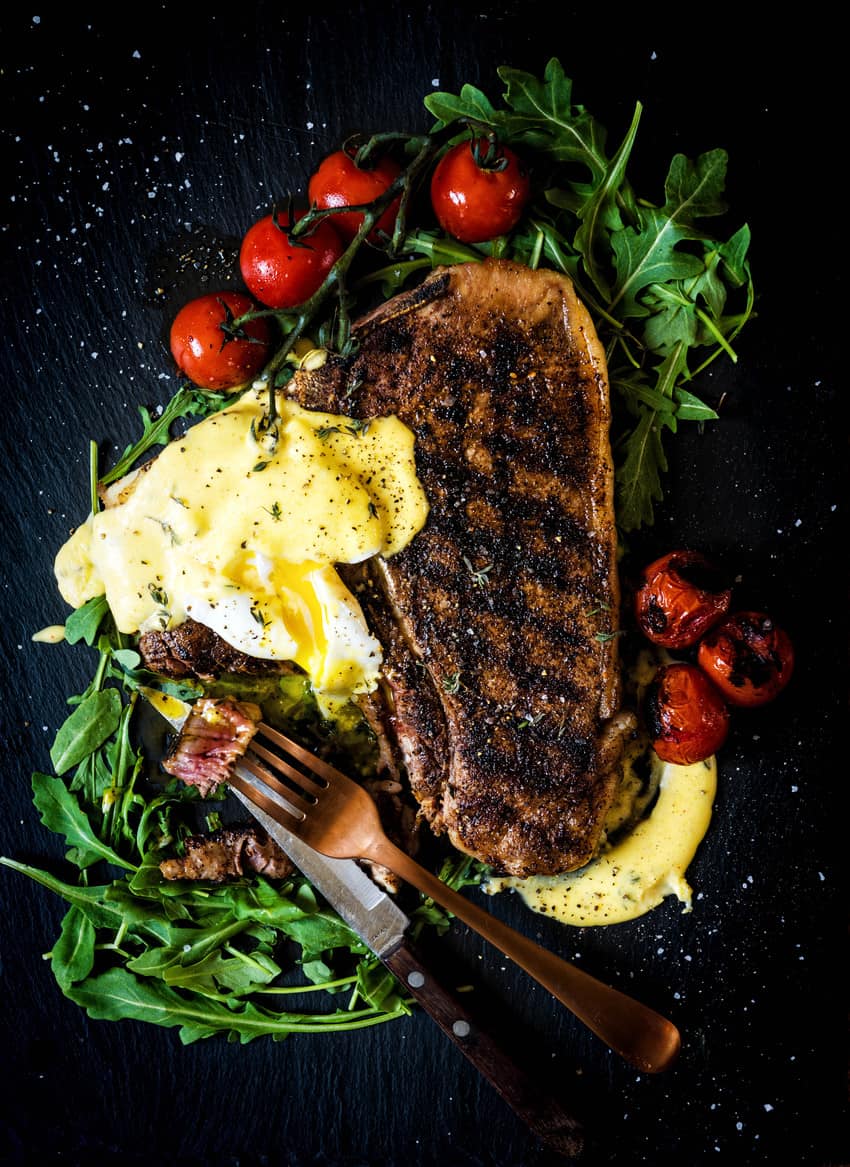
T-Bone Steak
A T-Bone steak is two steaks in one and includes a sizeable chunk of tenderloin and a larger piece of strip steak, separated by a T-shaped bone. T-bone is known for its tenderness and flavor and is a popular choice for grilling.
- Fact: The size of the bone makes it a great handle for turning the steak on the grill. Use long grilling tongs, of course.
- Grilling Tip: Start with high heat to sear, then move to lower heat to finish cooking.
- Seasoning and Side: Just salt and pepper to bring out the flavors. This steak goes well with a side of sautéed smoked mushrooms or green beans.
- Get the recipe: Grilled T-bone Steak
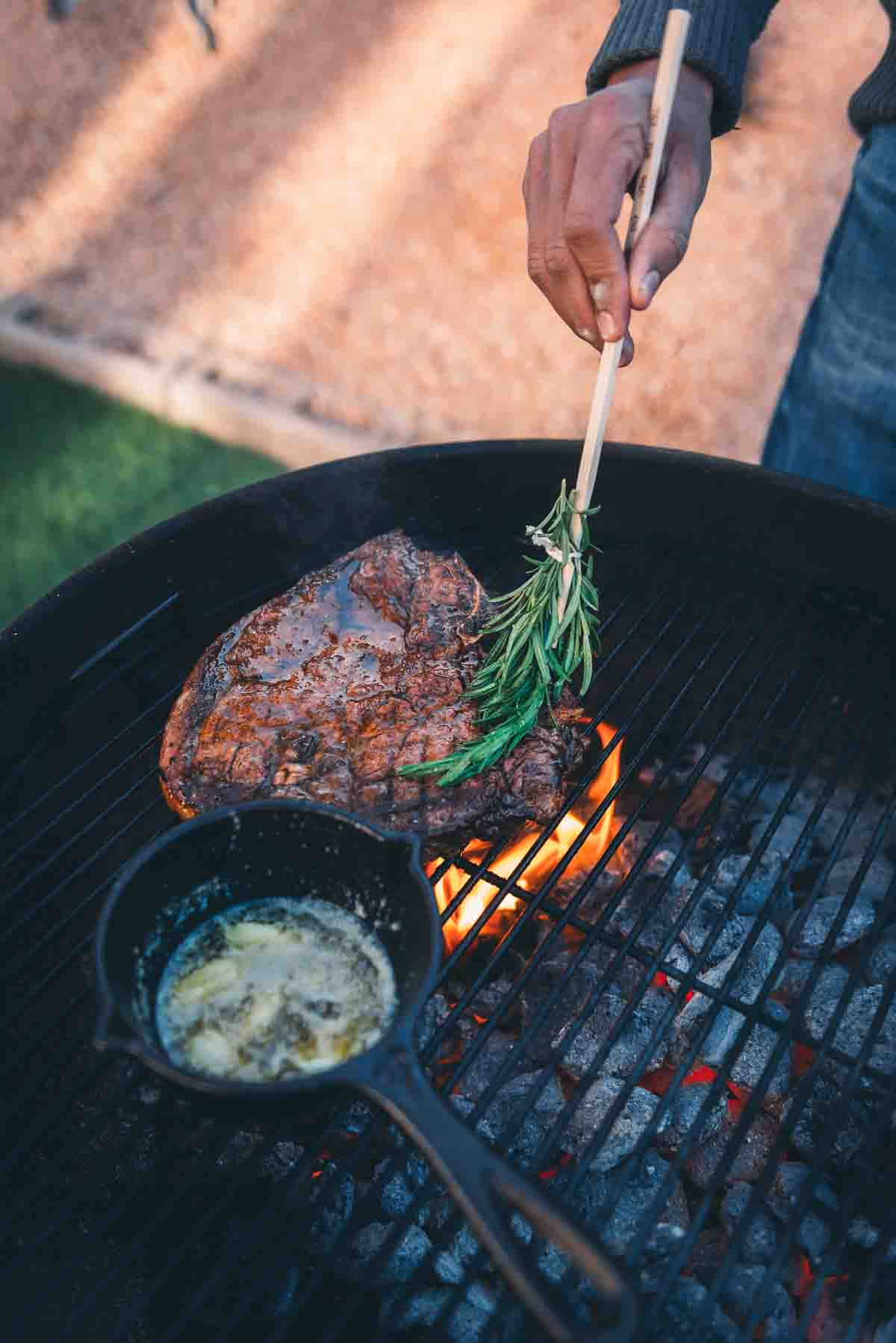
Porterhouse Steak
The Porterhouse is often considered the “king of steaks.” It’s similar to a T-bone but is cut from the rear end of the short loin and therefore contains more tenderloin. If a T-bone’s tenderloin section is at least 1.25 inches across, it qualifies as a Porterhouse. It’s a large cut, perfect for grilling, and is often shared among multiple people due to its size.
- Fact: Porterhouse steaks are essentially a larger version of a T-Bone steak. They have more of the tenderloin attached.
- Grilling Tip: Grill on high heat initially, then finish on low. Consider using a meat thermometer due to its thickness.
- Seasoning and Side: Minimal seasoning of salt and pepper is best. Try serving with a side of grilled corn on the cob and creamy coleslaw.
- Get the recipe: Grilled Porterhouse Steak
Affordable Steak Cuts
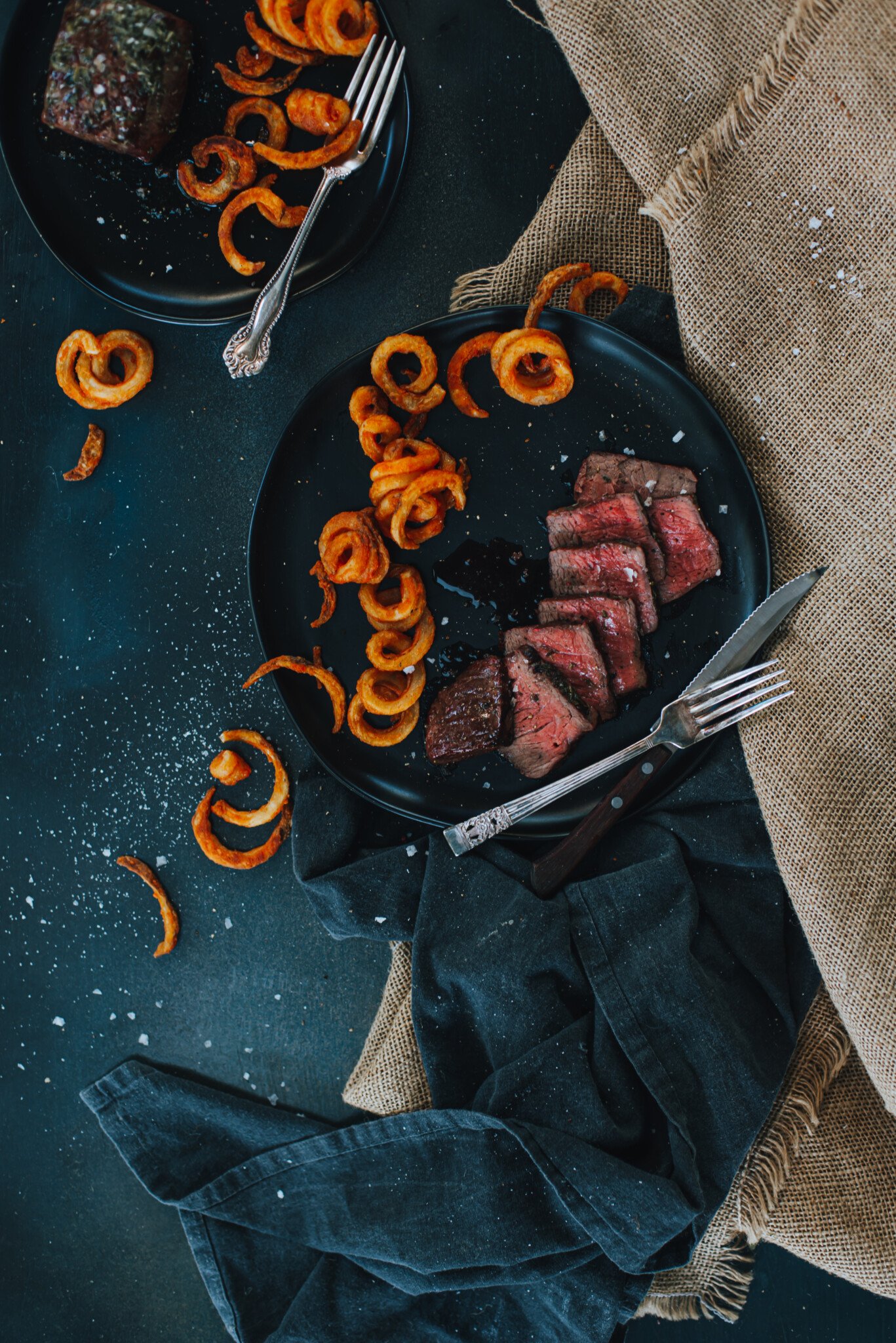
Top Sirloin Steak
The top sirloin is a versatile, relatively lean cut from the cow’s rear from the sirloin primal. It has a balanced beefy flavor, slightly less tender than other premium steaks but still great for grilling. Top sirloin steaks are thick and lean, making it a great cut for high-heat, quick cooking methods like grilling. It also takes on marinades and seasonings well.
- Fact: Sirloin refers to the mid-section of the animal, meaning ‘below the loin.’ Did you know any cut with the word loin it is is considered lean? This can help when choosing steaks at your local market.
- Grilling Tip: Cook over high heat to sear and lock in the juices.
- Seasoning and Side: Try a coffee-spice rub for a unique flavor. It pairs well with creamed spinach and red wine steak sauce.
- Get the recipe: Grilled Top Sirloin Steaks
Chuck Eye Steak
The chuck eye is often called the ‘poor man’s ribeye.’ It’s located close to the ribeye section but includes more connective tissue. It’s a small cut, with only two available per cow. While less tender than the ribeye, it has good marbling and a robust beef flavor. It benefits from the high heat of grilling to achieve a good sear and then should be finished over indirect heat to avoid overcooking.
- Fact: It’s often overlooked because it’s next to the chuck roast, a tougher cut, but the Delmonico packs a great beefy flavor and is one of our favorite steakhouse cuts of beef.
- Grilling Tip: Cook quickly over high heat and avoid overcooking.
- Seasoning and Side: Great with a smoky chipotle rub. Serve this steak with sweet potato fries.
Butchers Cuts
Skirt Steak
This long, flat cut is prized for its flavor more than its tenderness. It’s popular in Mexican cuisine for dishes like fajitas or steak tacos. Skirt steak benefits from marinating before grilling and is suited for hot and fast cooking due to its thinness. Remember to slice against the grain for maximum tenderness.
- Fact: It’s called ‘entraña’ in Spanish and is used widely in Latin American cuisine.
- Grilling Tip: Cook over high heat for just a few minutes per side.
- Seasoning and Side: Perfect for a zesty steak marinade. Good for making fajitas or serving with chimichurri sauce and roasted peppers.
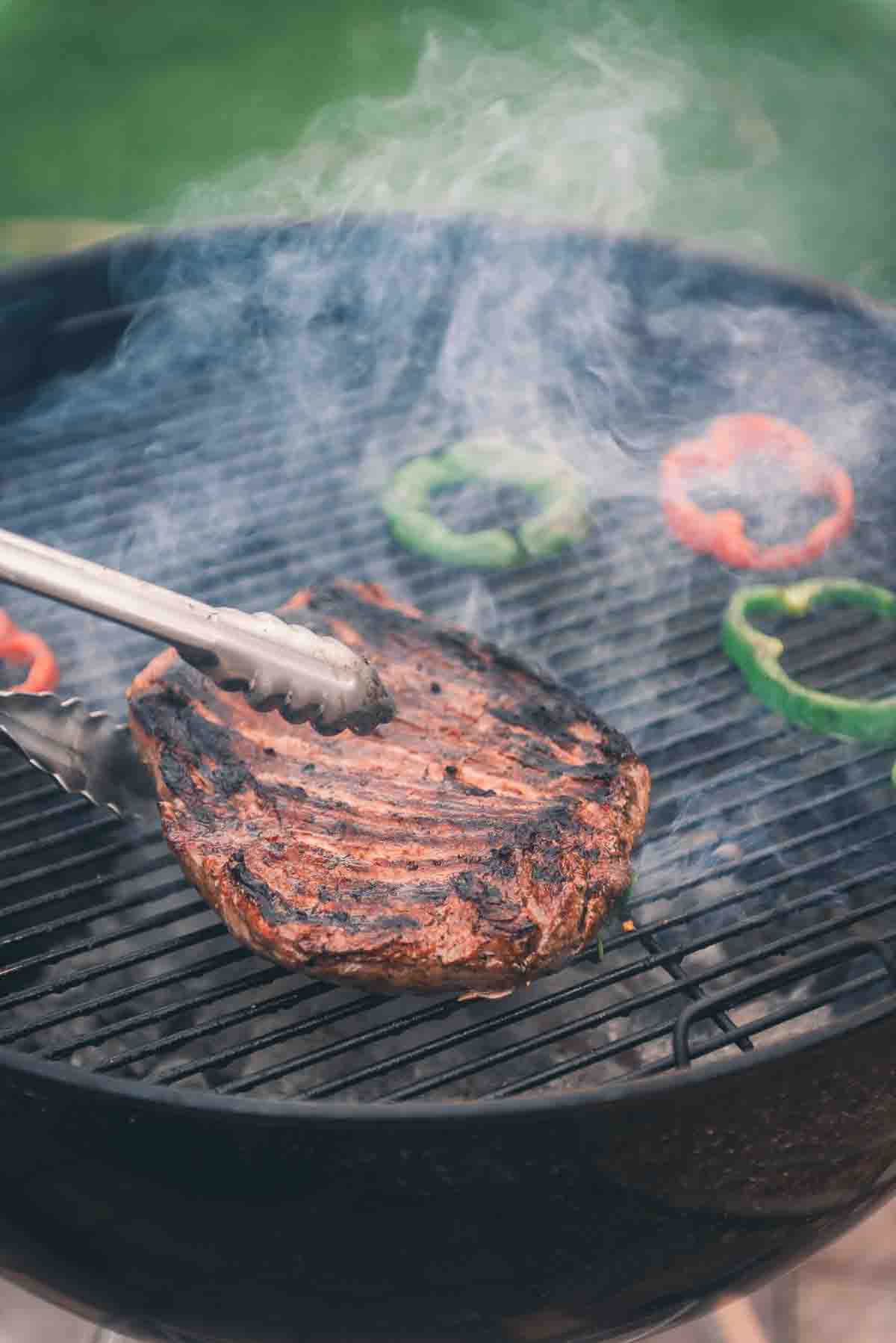
Flank Steak
Similar to skirt steak, flank is lean and muscular with a strong beefy flavor. It also benefits from a marinade to help tenderize the meat before grilling. It’s commonly used in dishes like London broil. Again, slicing against the grain is crucial.
- Fact: It’s known as ‘Bavette’ in French cuisine and is a classic cut for steak tartare.
- Grilling Tip: Grill quickly over high heat, but don’t overcook, as it can become tough.
- Seasoning and Side: Works well with a flank steak marinade to add flavor. Serve with a fresh batch of chimichurri rojo over grilled veggies.
- Get the recipe: Grilled Flank Steak
Hanger Steak
Once a butcher’s secret, hanger steak, or “butcher’s steak,” has gained popularity for its flavor. It hangs (hence the name) between the rib and the loin. Hanger steak is best grilled quickly over high heat and served medium rare to avoid toughness.
- Fact: It was often reserved for butchers themselves, hence the nickname “butcher’s steak.”
- Grilling Tip: It’s best cooked to medium rare; anything more can make it tough.
- Seasoning and Side: Marinate in a garlic and herb mixture. Serve it as the classic French steak frites or a green salad.
- Get the recipe: Grilled Hanger Steak
Lesser-Known Steak Cuts
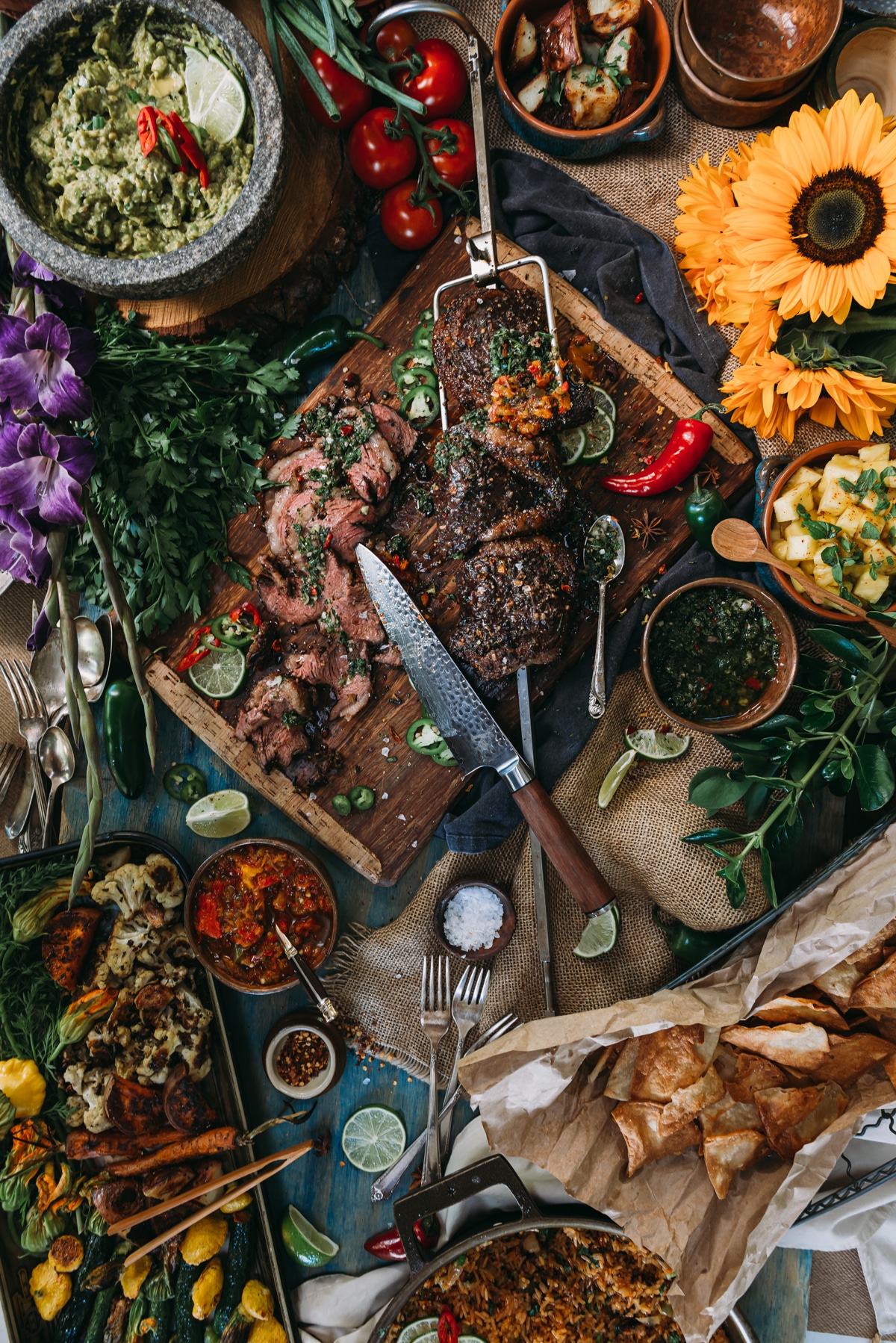
Picanha
Picanha steak is cut from the sirloin cap, the rump muscle, popular in Brazil and other Latin American countries. It’s recognized by its fat cap, which adds a lot of flavor when it melts during cooking. It’s often cut into thick steaks and skewered or grilled over high heat.
- Fact: Picanha is the star of any Brazilian churrasco (barbecue) and is traditionally cooked on large skewers.
- Grilling Tip: Cook it fat-side down first to render the fat. Cut against the grain for maximum tenderness.
- Seasoning and Side: Season with coarse sea salt only to let its natural flavor shine. Pair it with a tangy vinaigrette salad and fresh cilantro chimichurri.
- Get the recipe: Rotisserie Picanha
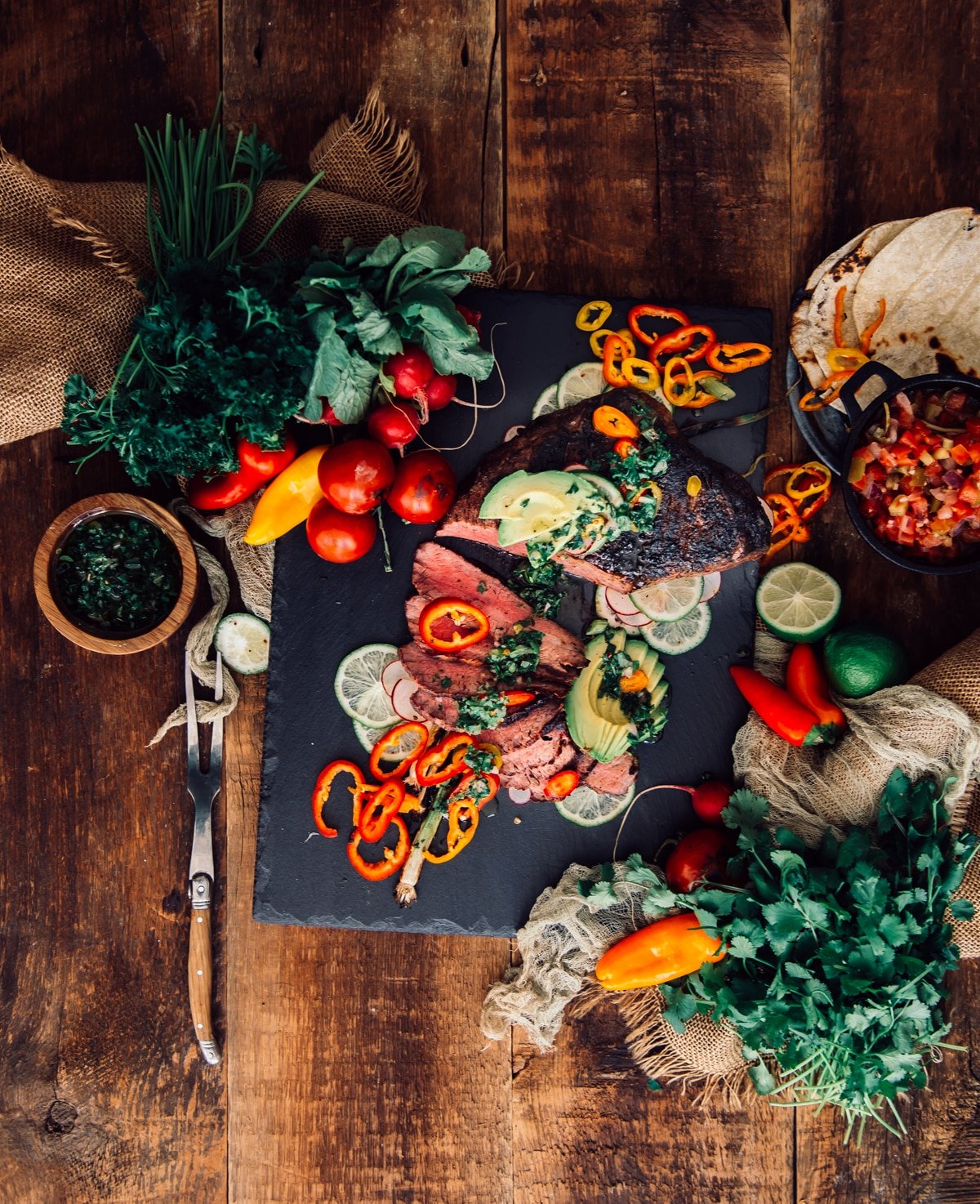
Tri-Tip
Tri-tip is a triangular cut from the bottom of the sirloin. It’s leaner than other cuts but still packed with rich flavor. It’s great for grilling but also shines when smoked or roasted. Its unique triangular shape requires careful attention to grilling to avoid overcooking the thinner section.
- Fact: Tri-tip is a popular cut in California and is often the star of a traditional Santa Maria barbecue.
- Grilling Tip: Sear on high heat, then finish on low with the reverse sear method. Use a meat thermometer to avoid overcooking. Pay attention to the grain when slicing. Cut the steak in the middle where the two grains come together to make slicing this cut easier.
- Seasoning and Side: Try a Santa Maria-style dry rub (garlic powder, pepper, and salt). Serve with pinquito beans, fire-roasted poblano crema, and salsa.
- Get the recipe: Grilled Tri-Tip
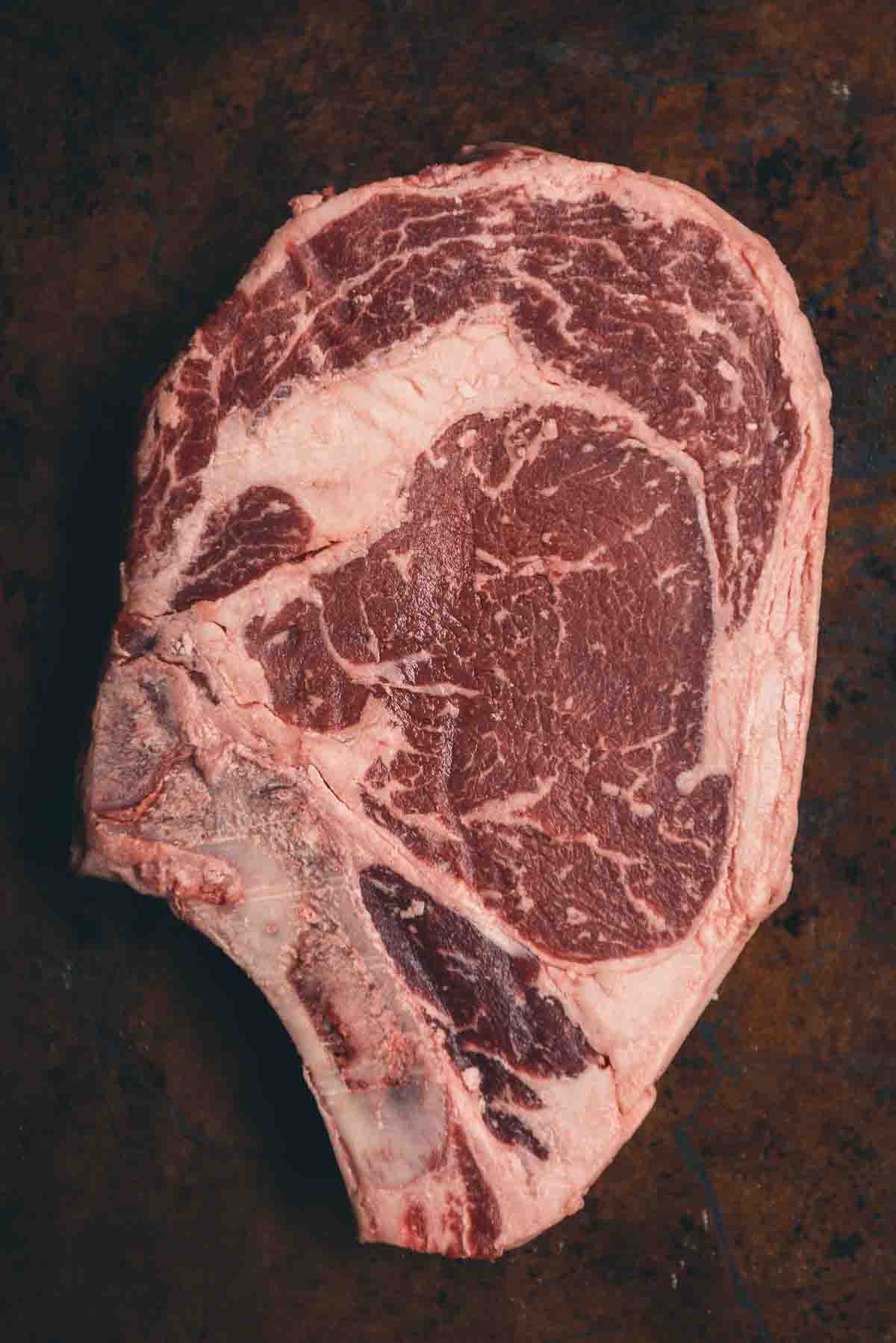
Steak Grading: The Role of Marbling
A good grilling steak is typically rich in marbling, which refers to the streaks of fat within the meat itself. This fat melts as the steak cooks, helping to keep the meat juicy and flavorful. Cuts with a decent amount of thickness also handle grilling well because they can develop a nice char on the outside without overcooking the inside.
Grilling Techniques: Direct and Indirect
Grilling imparts a smoky flavor and is excellent for most steak cuts. Understanding how to set up your charcoal grill and build a 2-zone fire and the difference between direct and indirect grilling is key to mastering the art of grilling steaks.
Setting up a 2-Zone Fire
Setting up a 2-zone fire allows you to control the cooking process by providing two areas of heat: one for searing and the other for slower cooking. To do this, arrange the hot coals on one side of the grill, leaving the other side empty. On a gas grill, keep 1 of the 3 (or 2 of the 4) burners on after you’ve preheated the grill. This gives you a hot zone for direct grilling and a cooler side for indirect grilling. Add wood chips or chunks if you know you will use the cooler zone to add more smoked flavor.
Direct Grilling
Direct grilling involves cooking the steak directly over the heat source. It’s great for searing the steak, creating a delicious caramelized crust. This method is best for cuts like the ribeye, which have good marbling or cuts thinner than 1 inch that don’t need long over the heat.
Indirect Grilling
Indirect grilling is when the steak is cooked away from the heat source, allowing it to cook slower and more evenly. This method is suitable for larger or tougher cuts that need time to become tender, like the tri-tip.
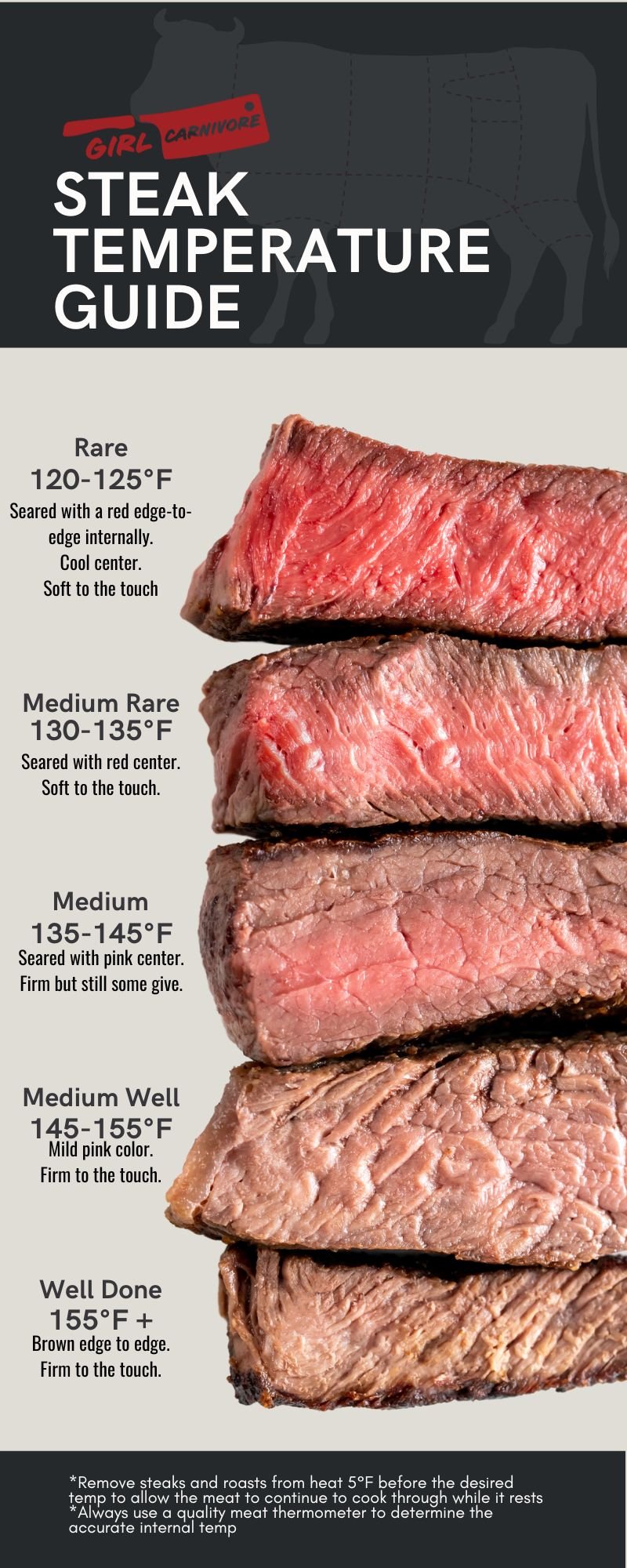
Steak Temperature Guide
| Doneness Level | Internal Temperature |
|---|---|
| Rare | 120-125°F (49-52°C) |
| Medium Rare | 130-135°F (54-57°C) |
| Medium | 140-145°F (60-63°C) |
| Medium Well | 150-155°F (66-68°C) |
| Well Done | 160°F (71°C) and above |
Remember, the temperatures listed are the final, rested temperatures. To achieve these, you should pull the steak off the grill a few degrees lower as it will continue to cook from residual heat. Always use a meat thermometer for accurate temperature reading.
Serving and Pairing Steaks
A good steak pairs well with a variety of side dishes, from classic grilled vegetables to hearty potato salads. Pairings depend on the specific cut and preparation, but a robust red wine, like a Cabernet Sauvignon, often complements steak well.
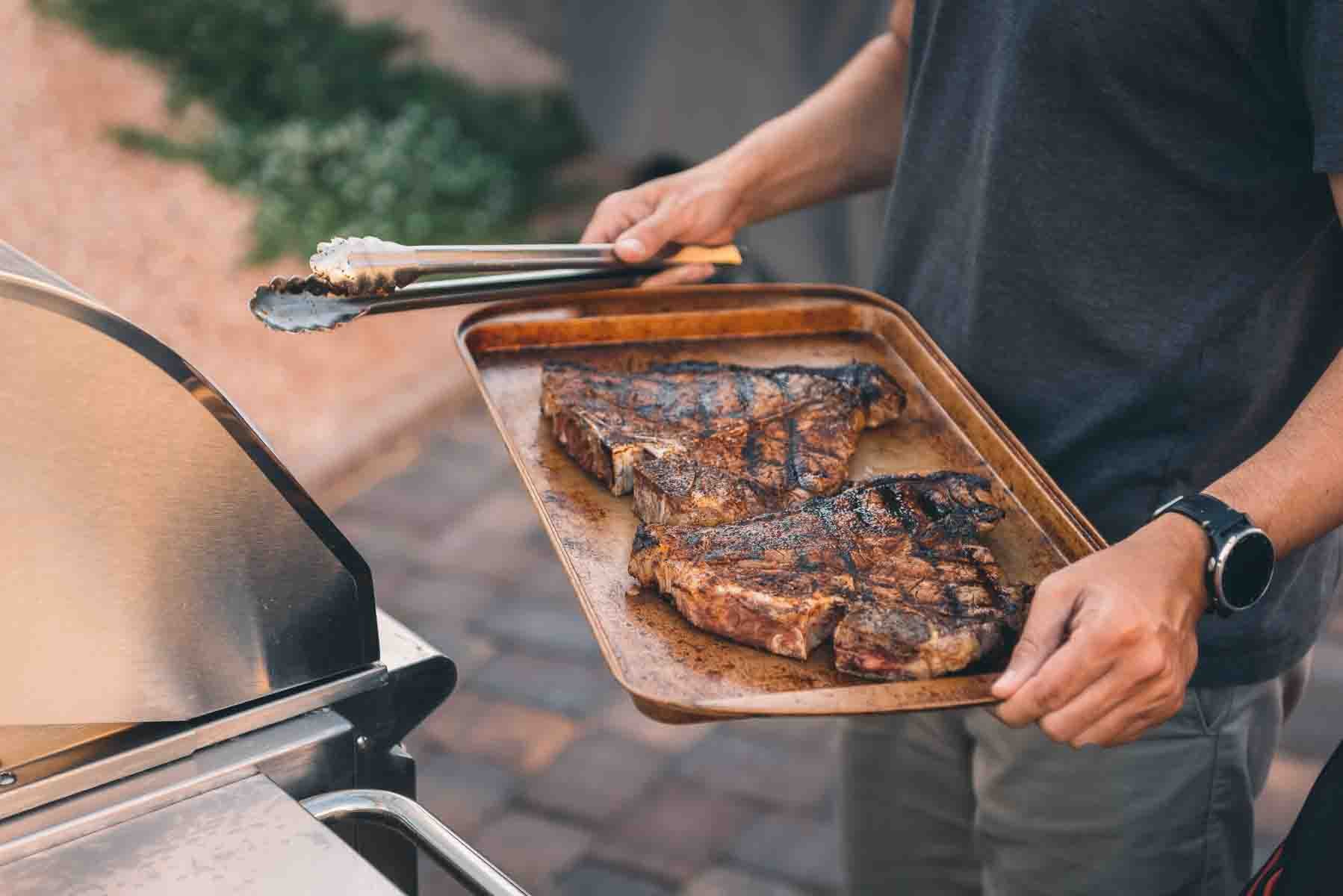
FAqs
When picking steaks to throw on the grill, look for even thickness, a bright, fresh red color, and well-dispersed marbling.
While specific seasoning choices can depend on personal preferences, at a minimum, you should season your steak with salt, pepper, and fat. The salt helps to enhance the natural flavor of the beef. Pepper is great for finishing, and letting the steak rest with a dollop of compound butter on it is a restaurant trick for adding more umami flavor to your meal. Depending on the cut, you may consider a steak marinade for tenderizing and adding even more flavor.
The grilling time depends on the steak’s thickness, the desired level of doneness, and outside elements like weather and altitude. We recommend using a meat thermometer to ensure the steak reaches your desired internal temperature. Generally, a 1″ steak will need to grill for 3-5 minutes per side for medium-rare over high heat.
Yes, letting your steak rest after grilling for about 5-10 minutes allows the juices to redistribute throughout the steak, leading to a moister and more flavorful bite.
The best way to determine if your steak is done is by using an instant-read thermometer and checking the internal temperature.
The Best Steaks for Grilling
